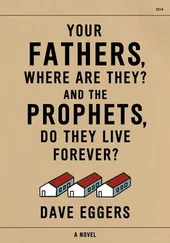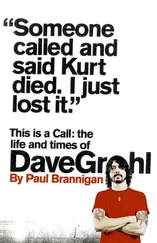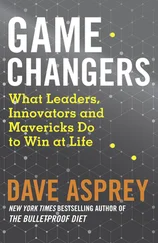I tried not to laugh.
Oh, my God. What am I getting myself into?
4 METALLICA—FAST, LOUD, OUT OF CONTROL
“You keep talking like that, I’m going to punch you in the mouth.”
IN THE BEGINNING IT WAS AS MUCH ABOUT STYLE AS SUBSTANCE.
I REMEMBER GOING OUT SHOPPING ONE DAY WITH LARS AND MARVELING AS HE SPENT THE BETTER PART OF THE AFTERNOON TRYING TO EDUCATE ME ON THE FINER POINTS OF PURCHASING HIGH-TOP SNEAKERS. IT WAS, APPARENTLY, SOMETHING OF A SCIENCE, AND LARS AND I DISAGREED ON THE PROPER FORMULA. CHECK OUT THE EARLY PHOTOS OF METALLICA AND YOU’LL SEE ME WEARING SHINY WHITE LEATHER CONVERSE ALL-STARS WITH RED STARS ON THE SIDE. THIS WAS MY CHOICE, NOT LARS’S. FOR SOME REASON, HE WAS OF THE OPINION THAT ROCK STARS WORE TRADITIONAL CHUCK TAYLORS.
“Fuck that!” I said. “That’s like the kids on Fat Albert. I’m not wearing that shit.”
I could be wrong, but I remember this as my first disagreement with Lars. It may sound like a petty detail, but I think it points to the inevitability of the dissolution of Metallica as it was in its infancy. Too many cooks in the kitchen. I was a band leader. So was Lars. Inevitably, the failure to agree on a common goal or to accept specific roles rose within the framework of the group. I’ve seen it time and again. Egos clash, combustible personalities ignite. The odds of surviving these obstacles—to say nothing of the financial, artistic, and managerial challenges—are astronomically bad.
And yet, in retrospect, I understand what Lars was doing because I’ve done it myself: he was trying to form an image as well as a musical entity. His heart, I think, was probably in the right place. To me, it was his taste that was misguided. One day he pulled out a photo of Diamond Head, a British heavy metal band that he admired to the point of obsession—he’d even trailed them, Deadhead style, on a European tour the previous year.
“Look at this,” he said. “These guys look like rock stars.”
I just stared, slack jawed. There was a lot to like about Diamond Head, but fashion was not high on the list. I looked at that picture, saw all the black spandex, the white boots, the long, flowing dress shirts unbuttoned to the waist with the bottom tied into a knot, exposing the singer’s hairy navel, and I wanted to gag.
“Lars, I can’t even believe a dude would dress that way. He looks like a chick.”
See, there were lines of distinction that couldn’t be blurred. You had to decide what type of music you were going to play, and your appearance had to properly reflect that music. In that sense, Diamond Head was not my cup of black coffee. A lot of bands were like that. Consider the importance of hair. Everyone had long hair in those days, with the exception of the punk bands. In hard rock and metal, hair was long, and within that framework a decision had to be made:
Up or down.
You were either like Page and Plant (hair down, and thus cool) or you were like KISS, Mötley Crüe, and so many other imitators (hair up, and thus not so cool). My hair went down. Always did, always will.
Next came the name. Every band needs a great moniker, right? We discussed and discarded several, including Leather Charm, which had been the name of a short-lived band in which James and Ron had both played. This was one of those names that just seemed incredibly wrongheaded to me. Leather Charm? What are you after with that one? Who’s your audience? It sounded kind of questionable in terms of projecting your notion of a good time, if you know what I mean.
It was Lars who suggested “Metallica,” and, it was an undeniably great name. The logo came from James. The first time I saw the Metallica logo, and everyone was raving about how cool it was, I remember thinking, Wow, it really is.
Whether Metallica had any reasonable chance for success, I couldn’t say. I do know that the first time I saw Lars play the drums, I was shocked at his mediocrity. Still, you had to admire his determination. The kid loved music (and good music, at that), and he wanted to be a rock star. That he would eventually become the Machiavellian character he is today…well, I didn’t see that one coming.
We obviously didn’t have a lot of material when we first started rehearsing together. Set lists in the beginning consisted primarily of cover songs, as well as songs written by James and his former bandmate Hugh Tanner. Most new material we had was written by me.
In early 1982 Metallica went into a studio for the first time. We hadn’t been together for very long, but somehow we ended up at a little place in Orange County, recording “Hit the Lights.” When it came time for the guitar solo, I nailed it, and everybody started freaking out about how great it was. For some reason, though, when the first version of that demo came out on Metal Massacre several months later, it also included some of Lloyd Grant’s guitar work. That struck me as somewhat odd and not really in the spirit of brotherhood that fuels a band, but I didn’t get all worked up over it. Things were happening rather quickly, and I was excited to be part of it.
Our first live show was on March 14, 1982, at Radio City in Anaheim, California. It was a raw, unpolished, but wildly energetic performance in front of about two hundred metalheads, many of them friends of ours. Still, a respectable audience for an unknown band playing its first gig. To give you an idea of where we were musically, nearly half of the nine-song set list consisted of Diamond Head covers. We also did “Hit the Lights.” The only song that could reasonably be considered a Metallica original, at that time—a song written exclusively by one of the members of the band—was “Jump in the Fire.”
That was mine.
I point this out simply as a way of illustrating that my role in Metallica was actually quite prominent. I was the lead guitar player and one of the primary songwriters. A band member’s role doesn’t get much more vital than that. Not that I was particularly concerned with territoriality at the time. We were just having fun, playing music, partying like crazy, trying to get better with each performance. We were all in it together, at least for a while.
We each had our strengths and weaknesses, and it’s interesting to look back now and see what Metallica looked like in those early days. Intent on playing the role of front man and singer, James did not pick up a guitar that night in Anaheim, nor for some time afterward. But there was a bit of a problem: James was not a naturally gregarious fellow, particularly onstage. At one of our earliest shows, I can remember him standing at the microphone, freezing, afraid to say a word. I don’t mean during a song—James had no problem singing or performing, and later, when he began playing guitar, he proved to be a sturdy guitarist as well. But the stage banter? That was hard for him. At one point, sensing his anxiety, I walked over to the microphone and started talking. That was the beginning of my persona as an unusually provocative and loquacious guitar player. A shit stirrer, in other words. Tradition, of course, dictates that guitar players perform wordlessly. They can jump up and down, rip off their clothes, maybe even set their instruments on fire. They are not supposed to speak. That role is assigned to the singer. Everyone knows that’s the way it’s supposed to work.
I didn’t care. I was doing what came naturally.
Two weeks later we got a huge break, playing a pair of shows in one night at the Whisky in Hollywood, opening for Saxon. Credit must be given to Ron for this one, since it was his connections with Mötley Crüe that helped open the door. Ron had taken a three-song demo tape to the club, hoping for an audience with the club’s manager. While there, he ran into the guys from Mötley Crüe and told them of his plan, and they offered to help out. If that sounds gracious, well, it really wasn’t. Mötley Crüe had originally been booked to open for Saxon, but at some point they, or their management, had decided that they were now too big to be an opening act; they wanted to headline. And since we were ready, willing, and able, with a solid demo as a calling card, the timing couldn’t have been better.
Читать дальше







